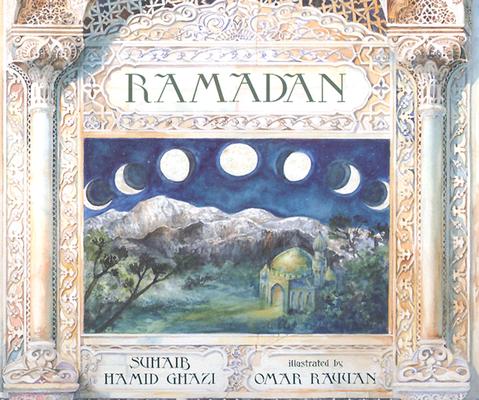This book is good to introduce a non-Muslim youth audience to fasting during the month of Ramadan. The best part of the book is the illustrations by Omar Rayyan.
I do have several criticisms of the text, some of which could be fixed in a new edition and others which could not.
The biggest problem which a new edition could not fix is the poor use of a fictional narration for a non-fiction text. Goodreads reviewer Jim Marsh wrote:
A non-fiction book that was altered to fit a fictive storyline, the addition of Hakeem and his family seem un-natural. While there are many important bits of information to be gathered from this book, and there are some strikingly beautiful illustrations within, I would have thought a lot more highly of it had they not tried to force these flat, almost anonymous characters in.There is a helpful glossary at the end.
While there are many important details included, there is some omission and some misinformation. These could be fixed in a second edition.
Omissions/Statements Open to Misinterpretation:
- In explaining the lunar calendar, to my mind it is essential to explain that the use of the lunar calendar means that a Muslim, if he/she lives 30 odd years as an adult, will fast Ramadan during all the different temperate zone seasons and that, depending on distance and direction from the equator, the length of day will vary. Now I'm hoping the author could come up with a less technical way of saying that. Perhaps the author could have put the child Hakeem into a specific season, such as North American fall, playing little league basketball after sunset. Then the parent could say something like, "My favorite sport was tennis, and when I began fasting, Ramadan was in the summer months, and I had to start my practice at 6:00 am before it got too hot and I could not play any tournaments." Then, the spouse could be from a sub-tropical country, like northern Nigeria, and she could say something like, "When I wrote to my parents explaining that the day in our city was 15 hours long, they wrote back saying, 'Haɓa, child, that makes no sense!'."
- While Muslims may break the fast with a date, there is certainly no requirement to do so, and I'm sure most Muslims break the fast with whatever's available.
- The description of the suhur meal is way too vast for the typical household. For example, this morning, I ate a peach, cantaloupe and cheese and drank water, and that was it. I don't think most families wake up one hour in advance to cook a full-blown meal at suhur. A similar point could be made about the description of the meal after sunset. Muslims in different places will eat according to their means and preferences.
- The day begins at sunset.
- The aya in the Qur'an mentioning the white and black thread is metaphorical, according to the interpreters I've read. I'm worried a reader might think a Muslim is required to have a white and black thread in hand to determine dawn.
- There is a little bit of propaganda: "When the slaves were set free, most of them became Muslim themselves and helped to free other slaves."
- Nobody looks for the moon on the 27th night. Every lunar month is 29 or 30 days. After the 29th day, people look for the moon. If they see it, the previous month ended the day before and they are now in the first night of the new month. Otherwise, the new month begins after the sunset of the day following that night. You never need to "return the next night." Whoever revises this book should become familiar with the rules of yawm al-shakk.
- Fasting begins from dawn, not sunrise. This is the difference between the terms fajr and shuruuq.
Unity Productions Foundation has a page based on its film "Nadia's Ramadan." I haven't seen any of the materials listed there. If you do, let me know whether you liked them.

